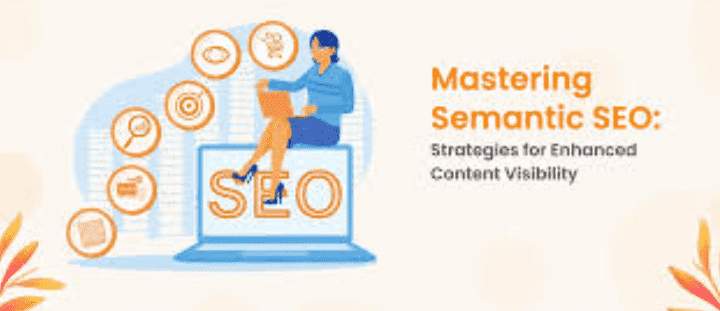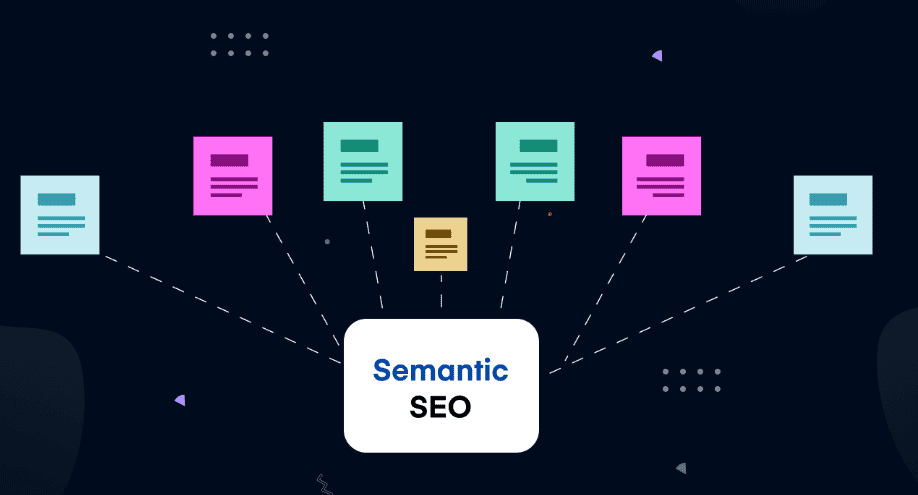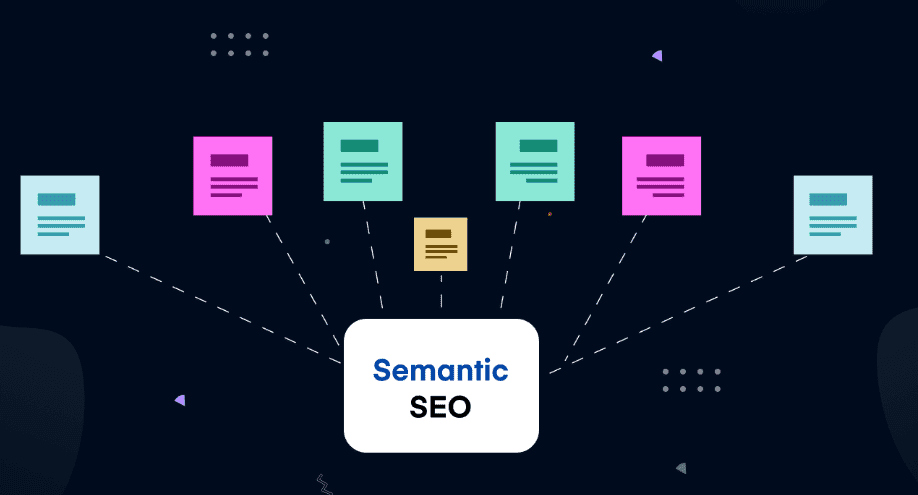semantic seo strategy: A Comprehensive Guide
Semantic search engine optimization focuses on facts and optimizing to look for queries instead of concentrating on particular key phrases. This approach aligns more cautiously with current SERPs like Google and Yahoo, which use the Google technique and rank content cloth. Here’s an in-depth guide on implementing an effective semantic SEO technique:
Understand Semantic Search
Semantic search is about context and motive. Search engines now use advanced algorithms to apprehend the way in the back of queries, the relationships amongst phrases, and the context wherein they seem.
Conduct Thorough Keyword Research
While traditional keyword research stays crucial, semantic seek engine advertising requires an extra profound method:
Latent Semantic Indexing (LSI) Keywords:
Identify associated terms and terms contextual to your number one keywords.
Search Intent Analysis:
Understand the specific varieties of purpose (informational, navigational, transactional, and commercial research) at the back of purchaser queries.
Long-tail Keywords:
These are more specific and much less competitive. They frequently higher seize the reason in the back of a search.
Create Comprehensive and High-Quality Content
Content is at the heart of semantic SEO:
In-depth Articles:
Create content material that covers a subject from multiple angles. Answer commonplace questions and offer valuable insights.
Content Clusters and Pillar Pages:
Organize your content around vital topics (pillar pages) supported by using associated subtopics (cluster content material). This shape helps strengthen the relationship between incredible portions of content material.
User Intent Matching:
Ensure your content aligns with the customer’s reason. For example, if the intent is informational, centered publications or how-to articles should be provided.
Optimize On-Page search engine optimization.
While growing content material, make sure it’s miles optimized for search engines like Google and Yahoo like Google:
Title Tags and meta descriptions:
Use primary and relevant phrases. Ensure they are compelling and applicable to the content.
Header Tags (H1, H2, H3, etc.):
Structure your content with clean headings. Use associated key terms and terms in subheadings.
Semantic HTML:
Utilize HTML5 elements like <article>, <section>, <header>, and <footer> to help search engines like Google and Yahoo know how the form and context of your content material fabric.
Internal Linking:
Use link-related content on your website to help search engines like Google and Yahoo and users correctly navigate your content.
Use Structured Data
Implement based data (schema markup) to enhance seeking engine facts of your content fabric:
Schema.Org:
Add applicable schema markup to your HTML to provide explicit clues about your content material fabric’s meaning. This can enhance visibility with rich snippets, knowledge graphs, and extraordinary SERP features.
Types of Markup:
Depending on your content material, use appropriate schemas for articles, events, products, reviews, FAQs, and more.
Enhance User Experience (UX)
A natural person enjoys is essential for semantic SEO:
Page Speed:
Ensure your net site loads rapidly on all gadgets.
Mobile-Friendly Design:
Optimize your internet site for cellular clients. Use a responsive format to offer continuous enjoyment across gadgets.
Readability:
Write in a clean, appealing way. Use short paragraphs, bullet factors, and visuals to make content material on hand to examine.
Navigation:
Create an intuitive navigation shape to assist customers in coming across statistics quickly.

Leverage Multimedia Content
Incorporate diverse forms of content material material to cater to precise consumer options:
Images and Videos:
Use applicable photos and motion pictures to enhance your content. Optimize them with suitable alt textual content and metadata.
Infographics:
Create infographics to provide complex Information in a digestible format without problems.
Interactive Content:
Use quizzes, polls, calculators, and other interactive elements to interact with clients.
Build Authority and Trust
Establishing your internet website as a relied-on source is crucial:
Backlinks:
Earn first-rate one-manner links from authoritative websites to your place of hobby. Focus on constructing relationships and creating hyperlink-worth content.
Social Proof:
Showcase testimonials, evaluations, case studies, and purchaser-generated content to construct credibility.
Author Expertise:
Highlight the statistics of content material authors. Include author bios and credentials.
Monitor and Analyze Performance
Continuously track and refine your technique:
Analytics Tools:
Use gear like Google Analytics and Google Search Console to expose website online traffic, personal behavior, and keyword search performance.
User Feedback:
Collect and review purchaser remarks to understand their desires and improve content material.
Regular Audits:
Perform SEO audits to identify improvement areas and ensure your website remains aligned with first-rate practices.
Stay Updated with seek engine advertising Trends
search engine advertising is constantly evolving. Keep updated with the cutting-edge traits and set of rules updates:
Industry Blogs and Forums:
Follow reputable search engine advertising blogs, forums, and companies.
Webinars and Conferences:
Attend search engine optimization webinars and meetings to take a look at from corporation experts.
Ongoing Education:
Invest in continuously gaining understanding to live before the curve.
Blog Writing with Semantic SEO: Focusing on User Intent
Writing blog posts with a semantic SEO method and developing content that fits your target market’s search rationale, even aligning with how gift-day search engines like Google understand and rank content. Here’s a detailed guide on a way to do this correctly:
Understand Search Intent
Search motive refers back to the purpose behind a consumer’s query. There are 4 number one styles of motives:
Informational:
The user is trying to find Information or answer questions.
Navigational:
The person wants to find an internet site or net page.
Transactional:
The character plans to purchase or input a transaction.
Commercial Investigation:
The purchaser studies services or products before you decide.
Conduct Intent-Focused Keyword Research
To write weblog content material cloth that meets user rationale, start with thorough keyword keyword research:
Identify User Intent:
Use equipment like Google Keyword Planner, Ahrefs, or SEMrush to understand the key phrases related to results types of pages for analyzing SERPs. Study the identify theine results pages that RPs) If your target purpose is the keyword sent, it is the type of content that ranks as it should and serves its purpose.
Long-Tail Keywords:
Focusing on long-tail keywords is important because they often help you figure out what someone is trying to say and feature reduced opposition.
Plan Your Content Structure
Creating nicely based content The material lets one fulfill a person’s cause successfully:
Outline Your Post:
Start with a smooth definition, including a creation, body, and conclusion. Break the body into sections with headings that describe it.
Pillar and Cluster Model:
Organize your content around critical (pillar content) topics and create supporting posts that delve into subtopics (cluster content cloth). This facilitates the establishment of topical authority and improves internal linking.
Write Engaging and Informative Content
Focus on delivering value through your content material:
Introduction:
Start with an exciting advent that addresses the person’s query and describes what they’ll have a look at.
Body:
Provide targeted, nicely-researched statistics. Use subheadings like bullet points and numbered lists to make things easier to read.
Conclusion:
Summarize the top factors and provide a clean name-to-movement (CTA) based on the customer’s reason.
Optimize On-Page SEO.
Ensure your content is optimized for search engines like google like Google and Yahoo:

Title Tags and Meta Descriptions:
Craft compelling pick-out tags and meta descriptions that consist of primary and related key phrases. They must represent the content fabric and encourage clicks.
Header Tags (H1, H2, H3, and many others):
Use headers to prepare your content logically. Include keywords in headers to keywords signify relevance to engines like Google.
Internal and External Links:
Use inner hyperlinks to associated content material and outside hyperlinks to quote authoritative assets. This complements user enjoyment and SEO.
Use Semantic HTML and Structured Data
Help search engines like Google and Yahoo understand your content material fabric higher:
Semantic HTML:
Use HTML5 factors like <article>, <section>, <header>, and <footer> to structure your content semantically.
Schema Markup:
Implement schema markup to offer search engines like Google and Yahoo specific data on your content. For weblog posts, use Article schema to make things more visible in SERPs.
incorporate Multimedia
Get clients involved with diverse styles of content:
Images:
Use top-notch, relevant snapshots. Optimize them with descriptive alt-textual content and document names.
Videos:
Include films to charge more. They can develop time spent on the website page and beautify engagement.
Infographics and Interactive Elements:
Infographics provide visually complicated data. Interactive factors like quizzes or calculators can beautify consumer revel in.
PRIORITISE User Experience (UX)
A super person famous in contributes to better ratings:
Page Speed:
Ensure your blog loads quickly. Use tools like Google PageSpeed Insights to identify and fix velocity problems.
Mobile-Friendliness:
Optimize your blog for mobile phones with a responsive format.
Readability:
Write in a clear, concise way. Use quick paragraphs, enough white space, and a readable font period.
Navigation:
Make your blog’s navigation clearer for users by providing a clean menu, breadcrumbs, and internal links.
Promote Engagement and Interaction
Encourage consumer interaction to get people more involved metrics:
Comments Section:
Enable feedback for your weblog to foster communication. Respond to feedback to put together a network.
Social Sharing:
Add social sharing buttons to make it smooth for readers to share your content.
CTAs and Forms:
Use CTAs and forms to guide customers to do things they want, like subscribe. to your e-publication or download a resource.
Monitor Performance and Adapt
Compare often. Your blog’s Performance and adapt your method as desired:
Analytics:
Use Google Analytics and Google Search Console to track music metrics like page perspectives, soar fee, session chosen period, and keyword rankings.
Use keyword Feedback:
Collect remarks from your target audience to better understand their dreams and choices.
Content Audits:
Perform periodic charges and preferred advisory service posts and update them with smooth data and optimized factors.
Writing for User Intent
Understanding and addressing purchaser motives is essential for crafting content that satisfies who you want to reach and SERPs like Google and Yahoo. Here’s a more specific information about how to write for user cause:
Identify User Intent
User motive is the cause someone has after they enter a question. There are four essential sorts:
Informational Intent:
Users search for facts or solutions to particular questions, along with “How to bake a cake.”
Navigational Intent:
Users want to find a particular website or page, such as “Facebook login.”
Transactional Intent:
Users are geared up to make a buy, including “purchase on footwear.”
Commercial Investigation:
Users learn about products or services earlier than they make a selection. For instance, “first-rate smartphones 2024.”
Conduct Keyword Research with KeywordIntent in Mind
Keyword studies have keywords cross past finding excessive-volume seek terms:
Tools and Analysis:
Use equipment like Google Keyword Planner, Ahref Keywords, and SEMrush to find keywords. Analyze the keyword SERPs to understand the reason behind every keyword.
Long-Tail Keywords:
These keyword phrases often reflect certain intentions and can be much less competitive. They are specifically beneficial for informational and business-company study goals.

Create Content That Matches Intent
Tailor your content to the People who are healthy and are looking for a cause:
Informational Content:
Create how-to courses, tutorials, and complete articles. Provide clean, focused, and fixed numbers.
Navigational Content:
Ensure your content is easy to find and has smooth navigation paths. Optimize for emblem-associated keywords.
Transactional Content:
Focus on product pages, reviews, and comparisons. Include clean CTAs to pressure conversions.
Commercial Investigation Content:
Develop in-depth critiques, comparisons, and course purchasing. Help users Choose wisely.
Semantic Search Engine Marketing Techniques for Content
Semantic search engine advertising and marketing includes optimizing your content material cloth to align with the contextual and the relationship parts of looking for questions. Here is a way to follow those techniques:
Use Latent Semantic Indexing (LSI) Keywords
LSI keywords are terms that could be semantically related to your number one keyword keyword:
Identify LSI Keywords:
Use tools like the LSI Graph or Google’s associated searches to find the key phrases.
Integrate Naturally:
Include LSI critical terms in your content fabric to give background and relevance. Avoid keyword keyword stuffing.
Structured Data and Schema Markup
Structured Information lets you search engines like google like Google and Yahoo to see the content fabric and context of your pages:
Schema.Org:
Implement schema markup relevant to your content, along with articles, products, or reviews.
Rich Snippets:
Structured notes are helpful. You can find listings with rich snippets and improve click-via quotes.
Content Clusters and Topic Authority
Organize your content material into clusters around Important things to installation authority:
Pillar Content:
Create entire pillar pages that cover significant subjects regarding energy.
Cluster Content:
Develop assisting articles that delve into subtopics and hyperlink returned to the pillar net website page.
Semantic HTML
Use HTML elements that provide this means and shape in your content material:
HTML5 Tags:
Use <article>, <section>, <header>, and <footer> to define the structure.
Accessibility and search engine marketing:
Semantic HTML makes it easier to find and lets search engines like Google like Google understand your content material much more.
Crafting SEO-Friendly Blog Posts
To create blog posts that may be optimized for engines like Google and client engagement, have a look at the superb practices:
Compelling Titles and Meta Descriptions
Craft titles and meta descriptions that lure clicks and encompass number one key terms:
Titles:
Ensure your titles are easy to find, short, and include the primary term. Try to get fifty to 60 characters in.
Meta Descriptions:
Write meta descriptions that summarize the content material and encompass a name-to-movement. Aim for 150-160 characters.
Structured Content with Headers
Organize your content material with the usage of header tags (H1, H2, H3, and so on.):
Hierarchy:
Use a smooth hierarchy with a single H1 tag for the most crucial name and H2 and H3 tags for subheadings.
Keywords in Headers:
Consider number one and related keywords in your headers to beautify SEO.
Internal and External Linking
Links offer more context and help with SEO:
Internal Links:
Link to relevant content for your website online to make it easier to navigate and keep customers interested.
External Links:
Link to the authoritative property to return your facts and add credibility.
Optimize for Mobile and Speed
Ensure your blog posts are cell-first-class and cargo short:
Responsive Design:
Use responsive format strategies to ensure high-quality content on all gadgets.
Page Speed:
Optimize photos, leverage browser caching, and restrict JavaScript and CSS to improve instances loading.
Use Multimedia
Incorporate several varieties of media to beautify your content fabric:
Images and Alt Text:
Use applicable pix with descriptive alt textual content to decorate for ease of access and search engine optimization.
Videos and Infographics:
Add movies and infographics to provide better deals and decorate engagement.
Encourage User Interaction
Engage your target market to improve customer metrics and SEO:
Comments Section:
Enable and actively make slight comments to encourage speaking.
Social Sharing:
Include social sharing buttons to make it smooth for readers to price your content.
CTAs and Forms:
Clear CTAs manual customers through desired movements, made up of subscription or shopping.
Conclusion
Implementing a semantic SEO approach is crucial in cutting-edge search engine panorama. By focusing on the reason behind personal queries and the contextual relationships between terms, you could create more applicable and complete content. This method no longer simplest improves your search engine rankings but also draws more targeted site visitors and complements personal engagement. Leveraging equipment like based information, LSI keywords, and in-depth topic coverage ensures that your content aligns with how search engines like Google interpret and rank statistics. Ultimately, a well-completed semantic search engine optimization method leads to higher visibility, higher user revel, and sustained online fulfillment.
